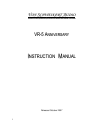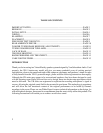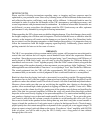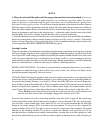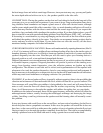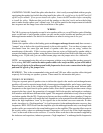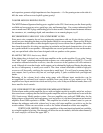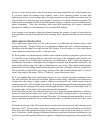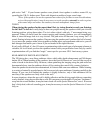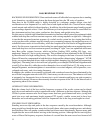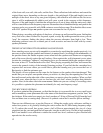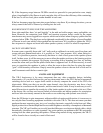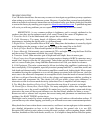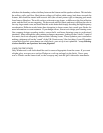11
BASS RESPONSE TUNING
BACKGROUND INFORMATION: Since enclosed rooms will affect the bass response due to standing
wave formation, a woofer tuning feature has been designed into the VR series of speakers.
Deep bass in the 20-40Hz range is highly desirable in a reference speaker design, since hall
reverberation at low frequencies is a sonic clue to both depth and hall size. Classical music simply
sounds anemic and artificial without deep bass. In addition, the wide dynamic range found in pop and
jazz recordings depends on bass “slam” and efficiency at low frequencies in order to sound like a live
bass instrument such as bass guitar, synthesizer, bass drums, and upright string bass.
For this reason, a hybrid triple-chambered transmission line/bass reflex system was engineered which
exhibits both deep bass and fast transient response, with a strong emphasis on tight bass. Although it
is true that the measured transient response of a sealed woofer system has less ringing than hollow
cavity type bass reflex cabinets used by virtually every competing company, the trapped rear wave of
sealed enclosures results in low efficiency, while the compressed air load results in sluggish transient
attack. For this reason, transmission line loading has much appeal and makes more engineering sense,
since both deep bass and fast transient response (resulting in “tight” bass) are optimized at the same
time. Bass reflex systems, however, which are hollow (lacking 100% stuffing fill), have very
unpleasant “hangover” due to cavity resonance. This problem has been eliminated in the VR design
by the utilization of a high stuffing density. The resistive damping in the form of acoustic foam and
Dacron fill must be compensated in both the driver design and the cabinet tuning “alignment.” All VR
Series use custom designed drivers with very high magnetic damping (low Qes) and stiff suspensions
(high Qms). The tuning ratio is derived from a proprietary over-damped Theile/Small alignment with
a total Q of less than 0.6, while the woofers themselves have a total Q below 0.3. By using an over-
damped alignment, maximum tightness is assured due to oversized magnets, stiff suspensions, over-
volumed enclosures, and a low tuning frequency.
In addition, the midbass rise normally associated with vented enclosures has been eliminated by the
use of Zobel conjugate networks in the VR-5 Anniversary woofer crossover. The inductor coils used
at extremely low frequencies have to be massive to avoid saturation and hence are quite expensive
and difficult to design. However, the extremely clean bass response of the VR-5 is the direct result of
engineering taken to the extreme.
GENERAL TUNING INFORMATION:
Both the volume level of the bass and the frequency response of the woofer system can be altered
easily by several methods in order to equalize the room’s influence on the bass response. Although the
VR bass systems measure ruler flat in larger rooms that have good dimensional ratios, (using both
gated sine wave and maximum length sequence FFT signals), smaller rooms tend to have bass
anomalies and overloading problems with low frequencies due to the long wavelengths involved.
STANDING WAVE PHENOMENA:
Standing waves are dips and peaks in the bass response caused by the room boundaries. Although
many people have heard the term, many don’t actually know what causes standing waves and what to
do about them. Since all speaker systems radiate bass almost omni-directionally, there are many path
lengths that the waves take before arriving at the listening position. Although the first arriving bass
wave will have flat frequency response, fractions of a second later the same waves have bounced off



